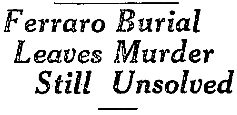
February 18, 1927
Whittier
The Whittier social set was agog at the forcible bobbing of Mrs. Evelyn Thompson’s hair by two of her former friends, Mrs. Florence Nutt and Mrs. Lucille Roulston.
All three young women had married men in the local oil business. The couples had become friends who frequently partied together. At a recent dance, Lucille believed that Evelyn had spent too much time in the arms of her husband, and in a fit of jealousy she plotted her revenge.

The bobbing incident unfolded like this: Evelyn had been out shopping for stockings, and as she passed by Roulston’s home she was flagged down and invited inside to see Lucille’s new hat.
Once inside the house, Evelyn decided to try on her new stockings. She was seated in a chair with one of her shoes off when she heard a snip and saw four of her curls fall to the floor. It was at this point that Florence held her down while the scissors wielding Lucille hacked off the rest of Evelyn’s curls, snarling “You used to be the center of attraction, but no man will ever look at you now.” Evelyn told police “It was over almost before I knew what was happening. I started fighting them without avail.”
Prior to the forced shearing, Evelyn had sported lovely long chestnut curls – they were her crowing glory. She said “I had never wanted to be a flapper. That’s why I didn’t bob my hair.”
Florence Nutt was arrested and charged with mayhem. A warrant had to be issued for the arrest of Mrs. Roulston, because she’d taken it on the lam. She was sighted in places as far flung as the Orient!
The mayhem charges would be dismissed, thus ending the criminal case. Evelyn had the option to seek damages in civil court if she wanted, but there would be no further mention of the bobbers or bobbee in the LA Times.

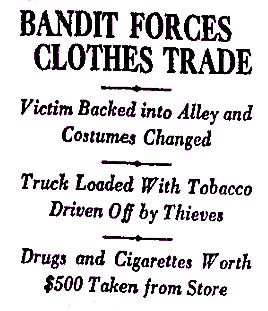
 February 3, 1927
February 3, 1927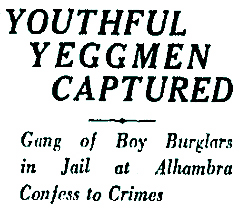 But fret not people of Los Angeles! The bulls have pinched (
But fret not people of Los Angeles! The bulls have pinched (
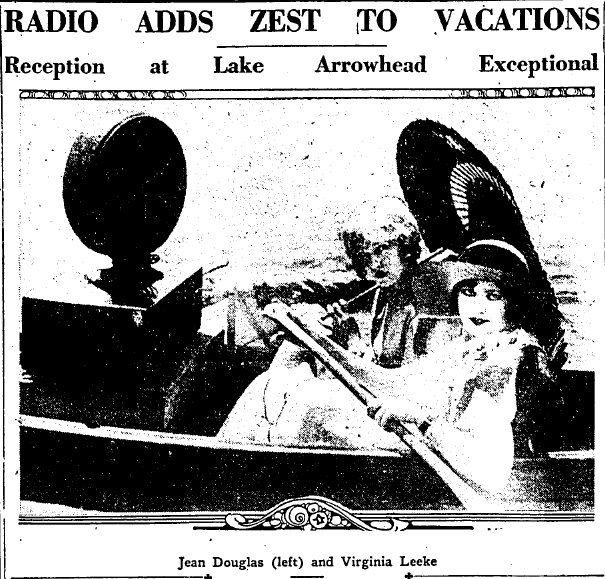

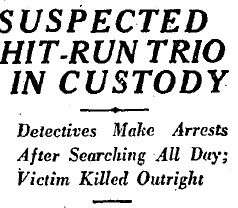
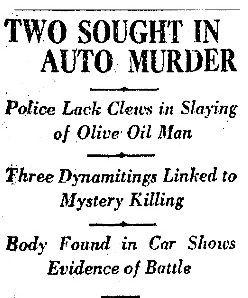
 On this Spring day in 1927, investigating officers were pavement-pounding in the Italian neighborhoods, attempting to scare up information about the April Fool’s Day discovery of one murdered Antonio (Tony) Ferraro. But there was no talking to be had, and the crime scene revealed nothing in the way of tell-tale fingerprints or any such evidence, and so Tony Ferraro remains another unsolved Los Angeles gangland slaying.
On this Spring day in 1927, investigating officers were pavement-pounding in the Italian neighborhoods, attempting to scare up information about the April Fool’s Day discovery of one murdered Antonio (Tony) Ferraro. But there was no talking to be had, and the crime scene revealed nothing in the way of tell-tale fingerprints or any such evidence, and so Tony Ferraro remains another unsolved Los Angeles gangland slaying.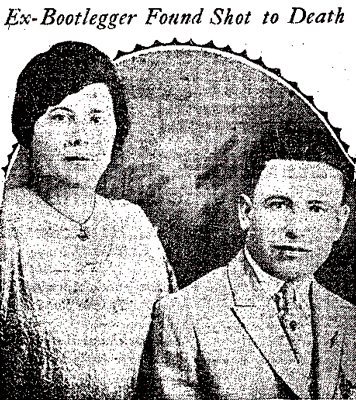 Robbery was not the motive, as Ferraro’s diamond ring, watch, money clip and olive oil were unmolested. Persons unknown entered Ferraro’s car, where he was beaten with a tire iron (his bruised hands indicating he put up a strong fight) and then shot in the head once with a .38 and twice with a .32. The body was then pulled from the front seat and lain across the olive oil in the back.
Robbery was not the motive, as Ferraro’s diamond ring, watch, money clip and olive oil were unmolested. Persons unknown entered Ferraro’s car, where he was beaten with a tire iron (his bruised hands indicating he put up a strong fight) and then shot in the head once with a .38 and twice with a .32. The body was then pulled from the front seat and lain across the olive oil in the back.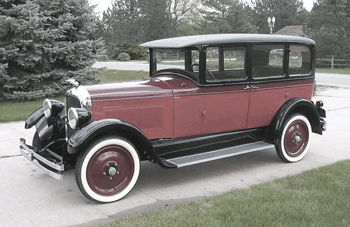 On April 5 the Times reported a rumor that Ferraro’s car had been seen the night of the 31st in
On April 5 the Times reported a rumor that Ferraro’s car had been seen the night of the 31st in 